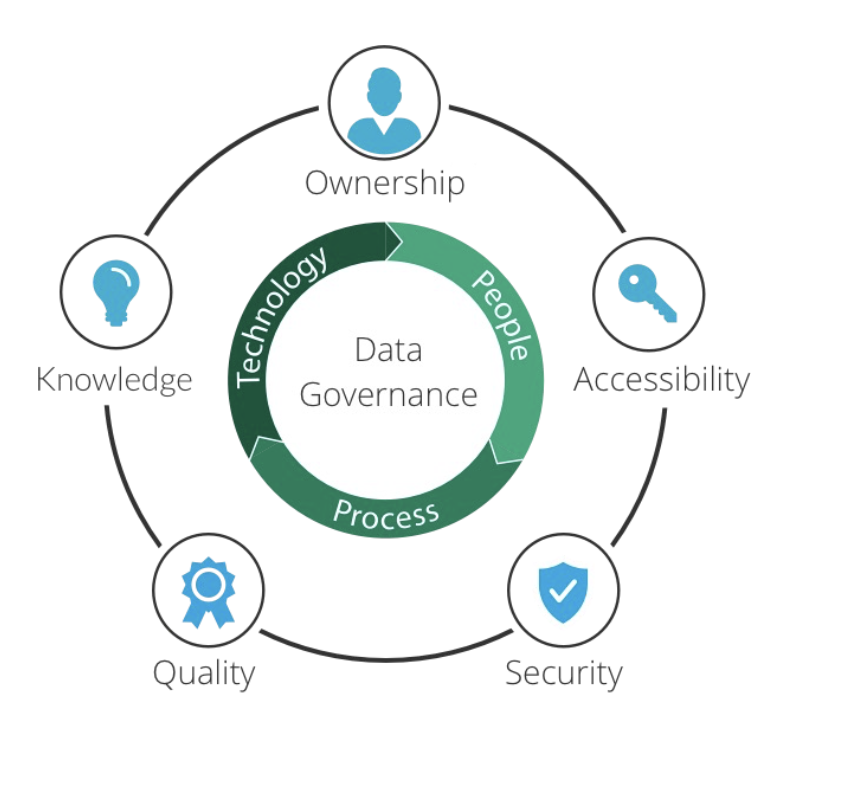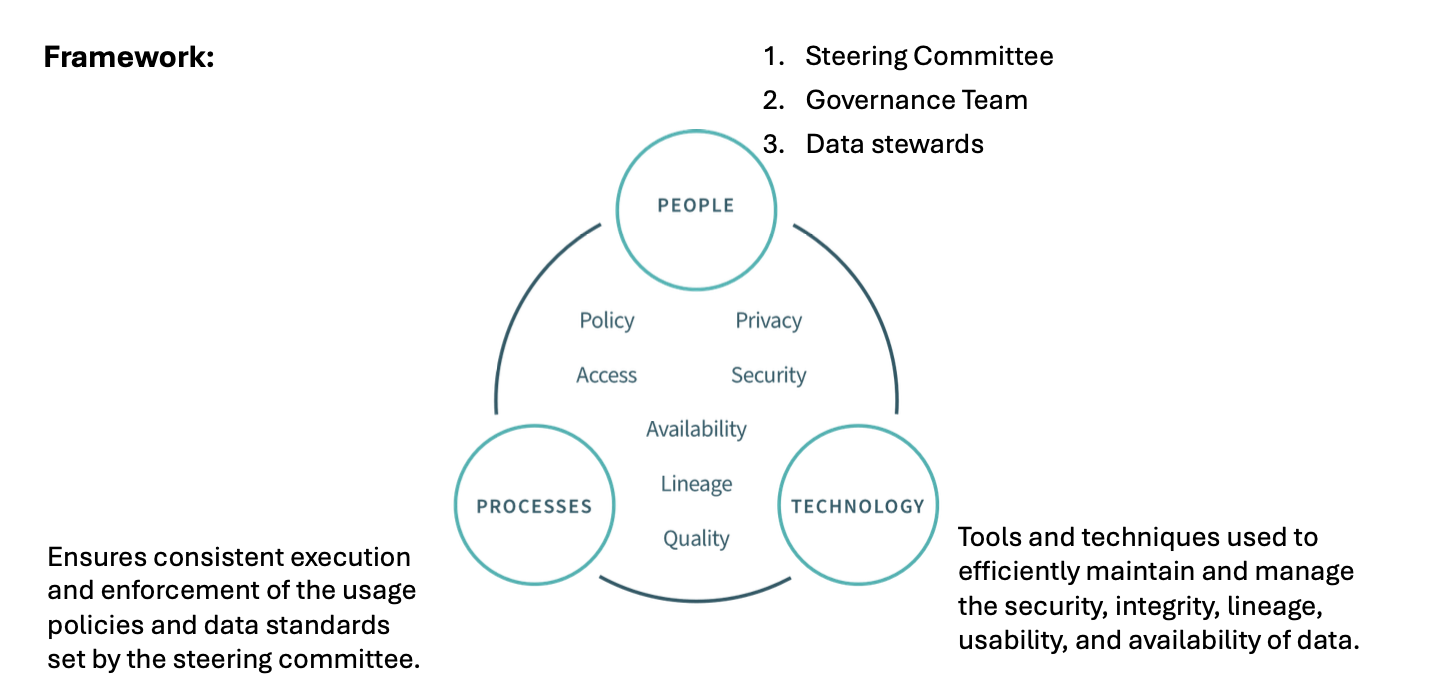DS Overview
Data Governance


MDM

Data Stewardship

Data Quality

Data Security
- Encryption
- Erasure
- Masking
- Resiliency
DataWarehousing
Elements
Bottom tier: Relational database
Middle tier: OLAP server(either ROLAP or MOLAP-based) with ELP solution, Stat analysis, reporting and data mining capabilities
Top tier: Client analysis tools for visulizing and presenting data to users

Data Privacy
Practices
- Encryption
- Access Control
- Two-factor authentication
Big Data Management
5 V’s of Big Data:
- Volume
- Value
- Variety
- Velocity
- Veracity
Data Types
Qualitative Data
- Nominal Data
- Often used for classifying based on features
- Ordinal Data
- Add layer of info by indicating “better”
Quantitative Data
- Discrete Data
- Countable and distinct values, often whole numbers and cannot be broken down
- Continuous Data
- Represents measurements and can take on an infinite number of values within given range
Techniques
Classification
Regression
Clustering

All articles in this blog are licensed under CC BY-NC-SA 4.0 unless stating additionally.
